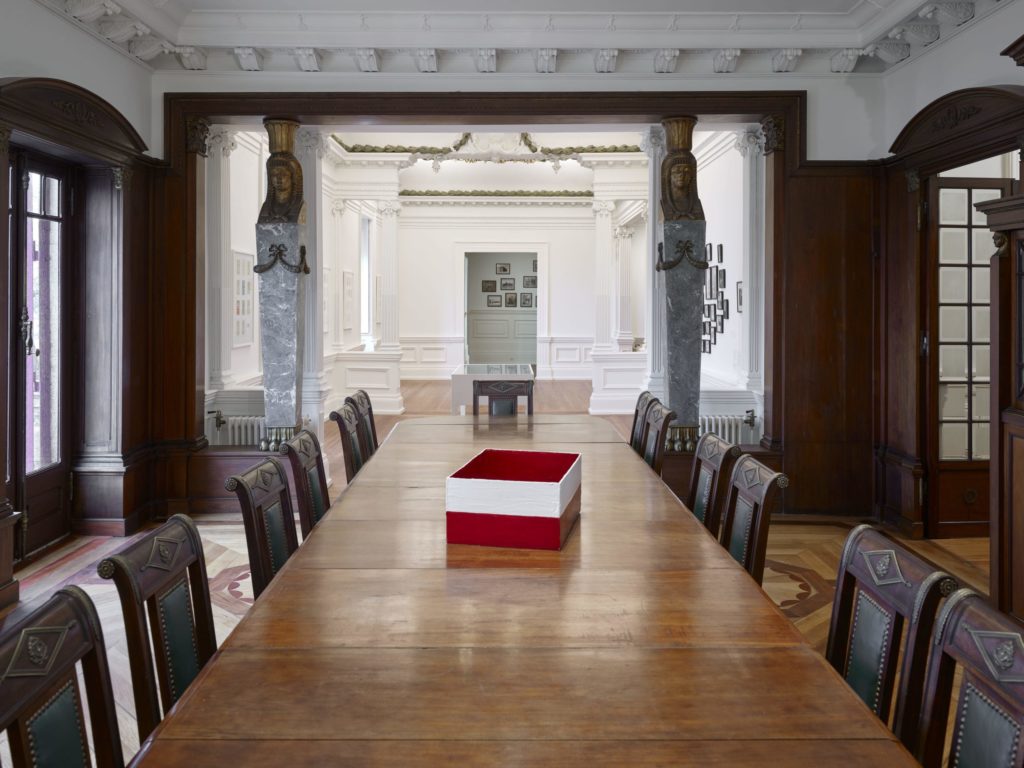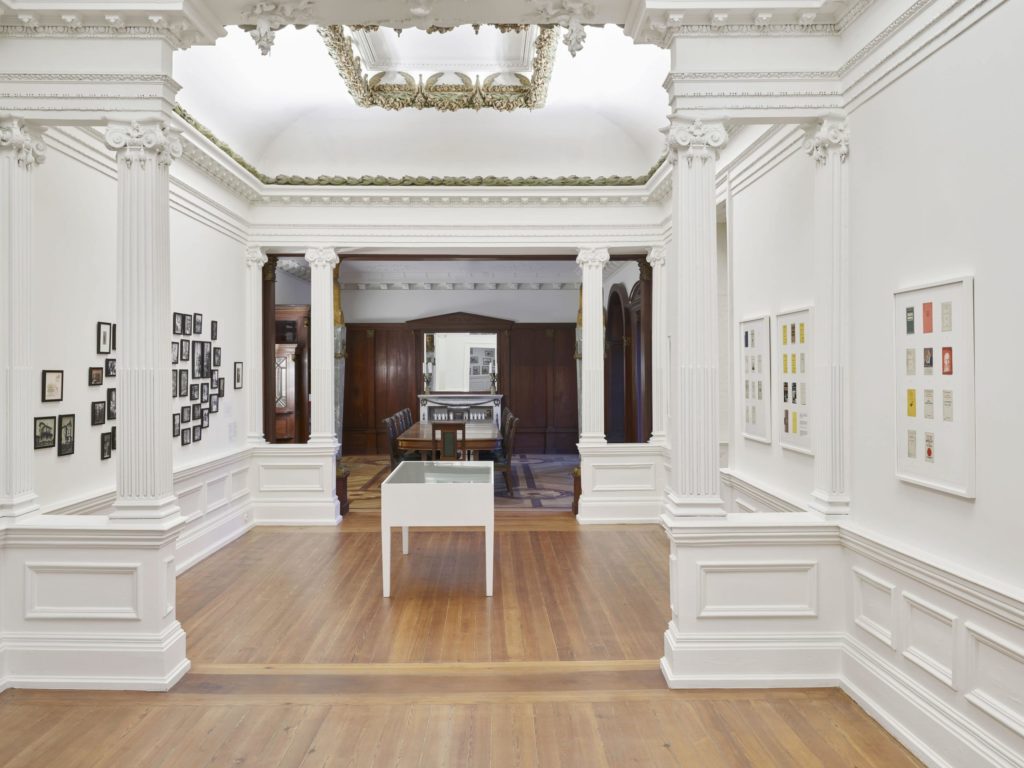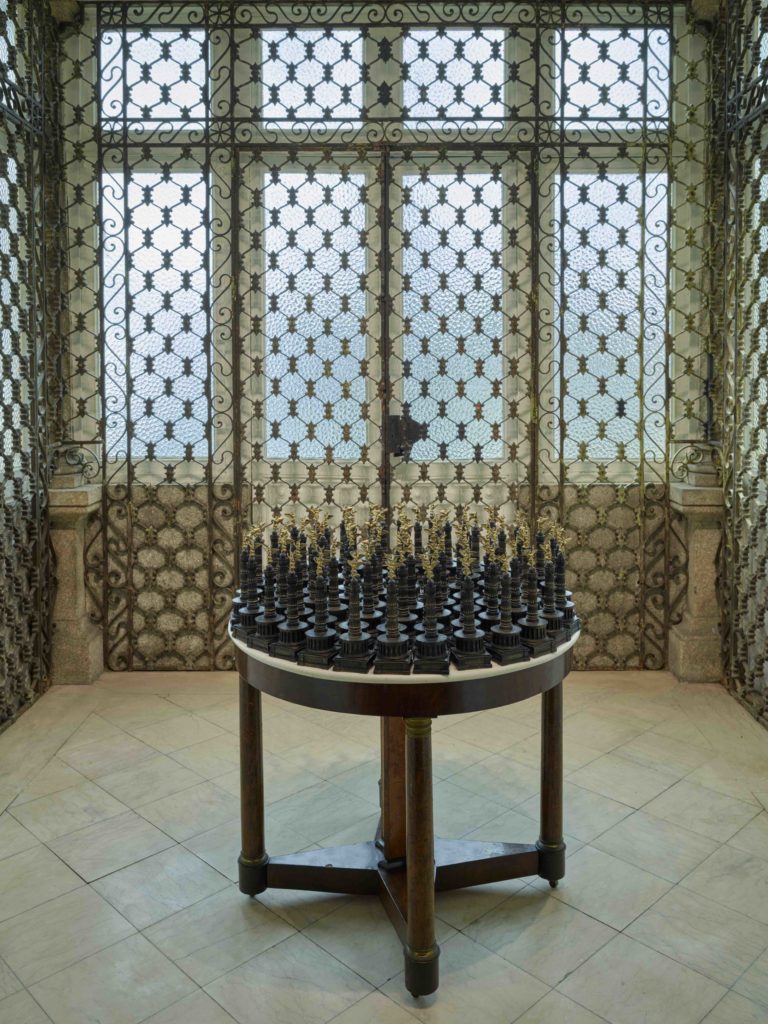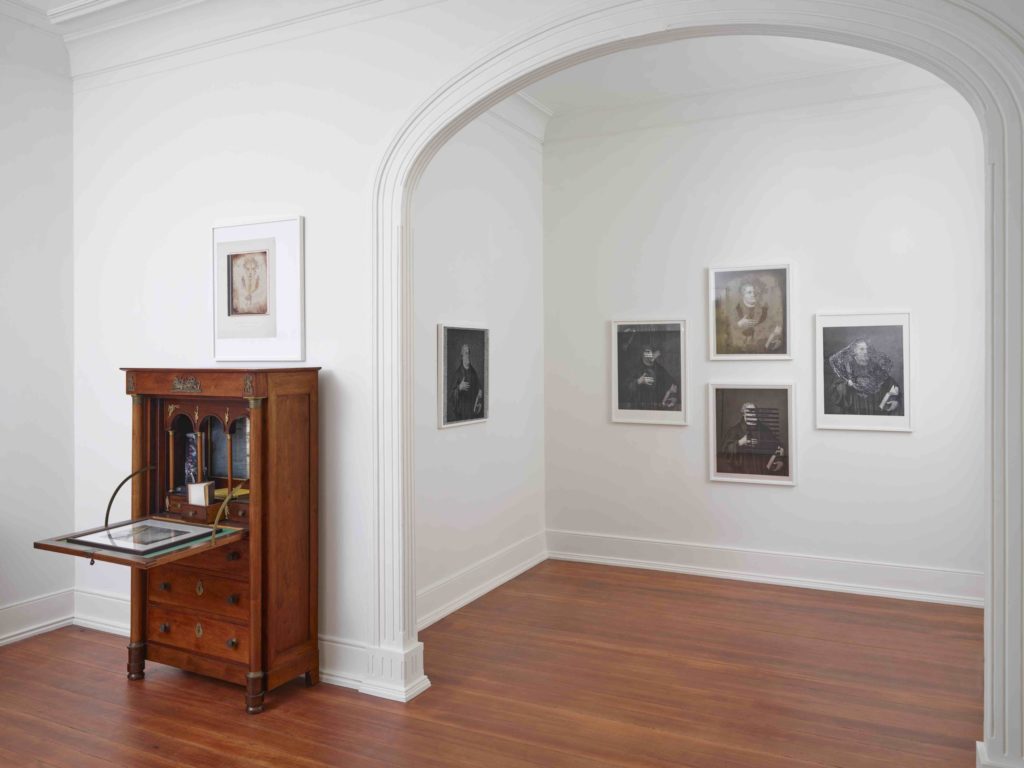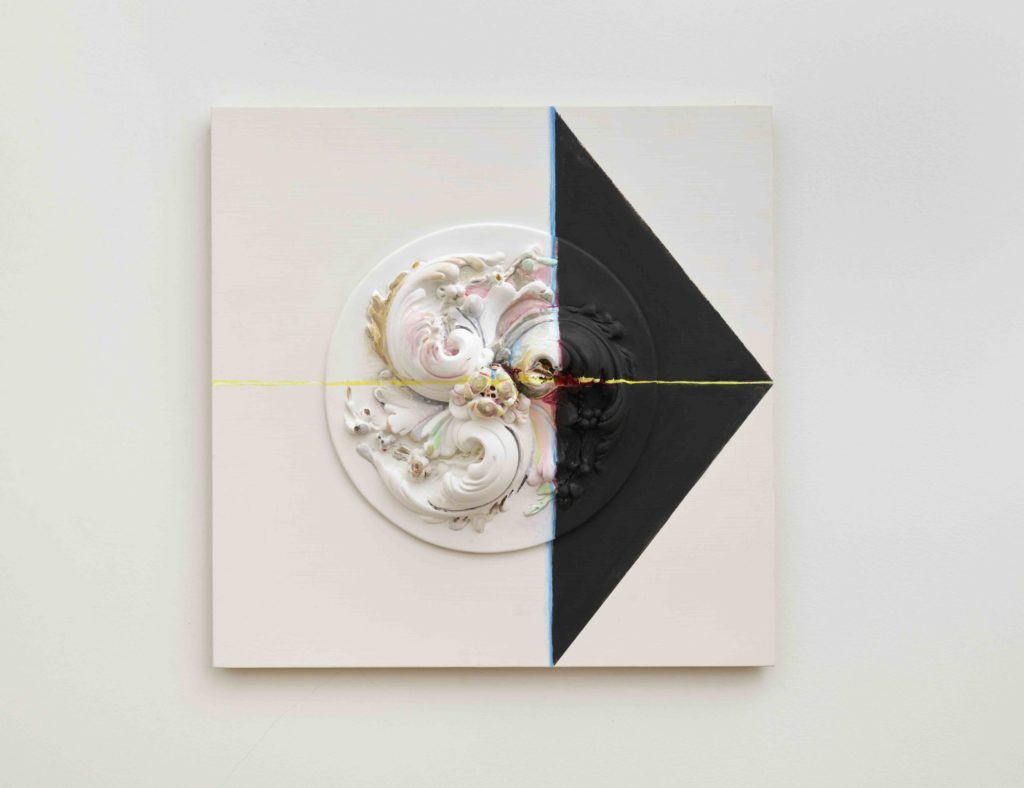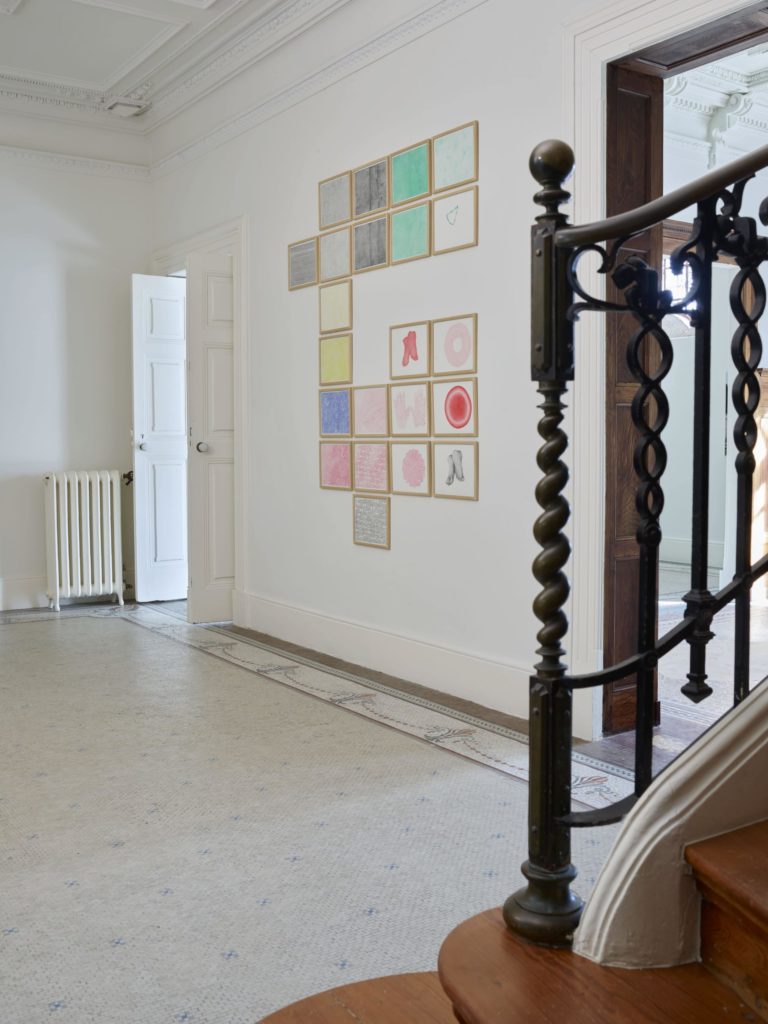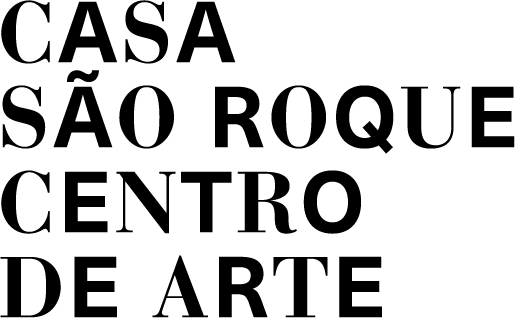Aura Rosenberg
Chantal Benjamin
Lais Benjamin Campos
Marcelo de Souza Campos Granja
Patrizia Bach
Arno Gisinger
Frances Scholz
R.H. Quaytman
Joanna Zielińska
Jean-Luc Moulène
Jean-Michel Alberola
André Cepeda
Paulo Nozolino
João Barrento
Sismógrafo
Footnote 14: Angel of History is an extensive group exhibition and research project accompanied by the conference and publication. It is also the second presentation launched at Casa São Roque (CSR) after the inaugural show of Ana Jotta INVENTORIA, a site-specific intervention in direct dialogue with the CSR building. It aims to continue the sequence of exhibitions devoted to the notion of the house – a former living space turned into a new contemporary art center. „Angel of history” will pay one more „historical” visit to the former Ramos Pinto palacete, built in 1759, remodeled in 1900–1910 by the Portuense-Parisian architect José Marques da Silva, where both the site and its architect are symbolic representatives of the progress, of the process of local modernization.
Appearing as the 14th iteration of the Footnote, an ongoing project on margins of history, the exhibition will focus on contemporary artists’ interpretations and dialogue with the German-Jewish philosopher and writer Walter Benjamin (born in Berlin in 1892, died in Port-Bou in 1940), an eminent expert on the „everyday life” of the bourgeoisie and the society of „high Capitalism”, as portrayed in his unfinished opus magnum Arcades Project [Passagen-Werk] dedicated to Paris, but also in his autobiographical Berlin Childhood around 1900. The exterior and interior became crucial emblems for his topographic analysis of the experience of modern society, founded on the division between the street, a space of the masses and production – and home, a „cocoon of consumption”, in which the intérieur is “not just the universe of the private individual; it is also his etui”.
The eponymous „angel of history” is an old and rare iconographic figure, most known in the 18th century, having few embodiments in old engravings and prints. Here it is referenced directly through Benjamin’s famous allegory, which was inspired by Paul Klee’s Angelus Novus monoprint (oil transfer drawing with watercolour) from 1920. Benjamin bought the work in 1921. In the same year he was also planning to develop the literary journal under the same name Angelus Novus, which was supposed to „draw a connection between the artistic avant-garde and Talmudic legend about angels who are being constantly created and find an abode in the fragments of the present”. This angel accompanied him as he moved between apartments, and reappeared in a few of his essays – but it is at the core of his last, posthumously published text Thesis on the Philosophy of History [On the Notion of History]: „A Klee painting named Angelus Novus shows an angel looking as though he is about to move away from something he is fixedly contemplating. His eyes are staring, his mouth is open, his wings are spread. This is how one pictures the angel of history. His face is turned toward the past. Where we perceive a chain of events, he sees one single catastrophe which keeps piling wreckage upon wreckage and hurls it in front of his feet. The angel would like to stay, awaken the dead, and make whole what has been smashed. But a storm is blowing from Paradise; it has got caught in his wings with such violence that the angel can no longer close them. The storm irresistibly propels him into the future to which his back is turned, while the pile of debris before him grows skyward. The storm is what we call progress”. In 1940, the year in which Benjamin was writing these words, his research ended, in Port-Bou in Catalonia, where he committed suicide after a long exile whilst hiding from the Gestapo. He was on his way to Portugal where he was supposed to board the refugee ship from Lisbon to New York to join his close friends Gretel and Theodor W. Adorno, and to start a collaboration with the Institute for Social Research.
Benjamin’s exile and his never completed visit to Portugal are topics that nevertheless cross in transversal histories near Porto. Benjamin had a son Stefan, who had four daughters. One of these daughters, Chantal, born in London, had a relationship with a Brazilian of Portuguese-German origins, Marcelo de Souza Campos Granja, whose great grandparents had a cork business in Lourosa, and residences in Granja and Espinho. They lived for several years in Brazil where Chantal learned Portuguese-Brazilian. They later had a child Lais Benjamin Campos, and are now all living in Berlin, speaking Portuguese-Brazilian at home. If Walter Benjamin was not able to reach Portugal to go to the United States, Portugal has resurfaced in the path of his descendants. This Footnote is commenting on the movements of Benjamin in Europe, but also on the movements of his family until today: Benjamin leaving Berlin; his descendants returning to Berlin, after periods spent in Europe and America. These are histories that allow us to ask, in a different way, what does it mean “to be at home”?
In Footnote 14 at Casa São Roque, the migrations of modernity will be told by private histories and singular small-scale narrations developed over years. Participants include artists, scholars, children and teachers: Aura Rosenberg, Chantal Benjamin, Lais Benjamin Campos, Marcelo de Souza Campos Granja, Patrizia Bach, Arno Gisinger, Frances Scholz, R.H. Quaytman, Joanna Zielińska, Jean-Luc Moulène, Jean-Michel Alberola, André Cepeda, Paulo Nozolino, Joäo Barrento, Sismógrafo. This project also involves collaborations with the Walter Benjamin Archiv in Berlin, Werkbund Archiv in Berlin, Camara Municipal do Porto, Fundação Marques da Silva in Porto, Centro Portugués de Fotografia in Porto, Galerie Chantal Crousel in Paris, Miguel Abreu Gallery in New York, Serralves Museum, and especially Sismógrafo collective and Casa das Artes in Porto for the conference Imagens de pensamento (Thought-images) curated by Susana Camanho and Emidio Agra.
Footnote is an ongoing project by Barbara Piwowarska, commenced in 2010, employing a “methodology of margins”, referencing existing institutions, situations and concepts in the format of exhibitions and interventions. Past iterations include: Footnote 1: Phantom Limb (Center for Contemporary Art Ujazdowski Castle, Warsaw); Footnote 2: Correction (Silberkuppe, Berlin): Footnote 3: Andrea Fraser (Foksal Gallery, Warsaw); Footnote 5: Screening Space (MUMOK, Vienna); Footnote 6: As Model (Miguel Abreu Gallery, New York); Footnote 10: Museum of the Unknown (Centre Pompidou, Paris), Footnote 11: Volodymirskyi Market (Kiev Art Week, Kiev), or Footnote 12: No Medium (Academy of Fine Arts / Exhibitions Bureau, Warsaw).
Exhibition: October 25, 2020 – October 5, 2021
Curated by Barbara Piwowarska
